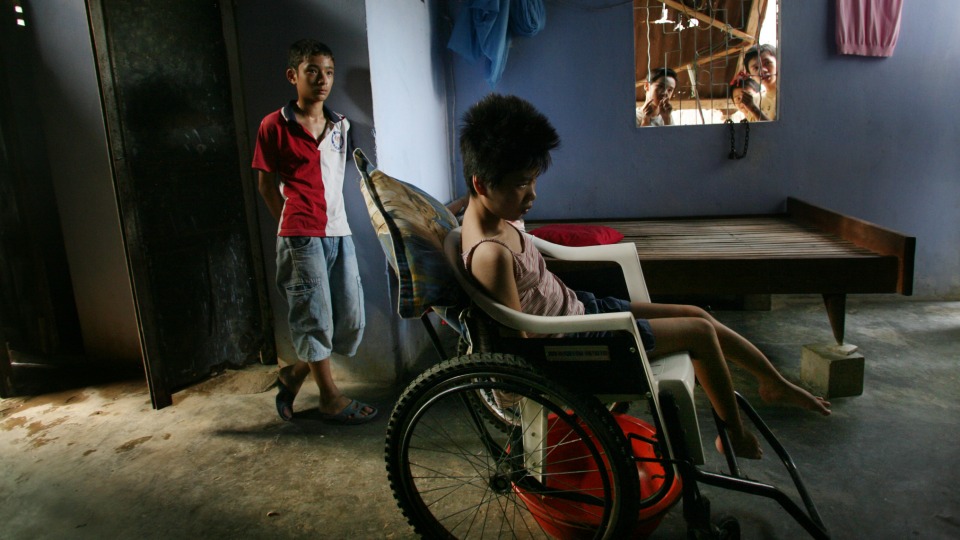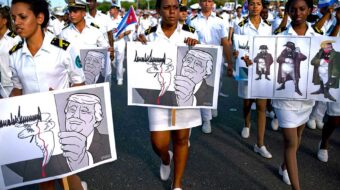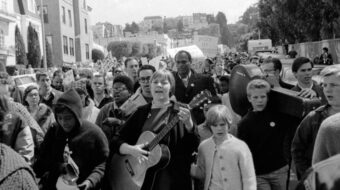
The following article is the first installment in a two-part series on U.S. chemical warfare in Vietnam. Part one provides historical background to the issue; the next will cover the victims and their legal battles.
Mr. Nguyễn Thanh Sơn was barely an adult in the 1960s when he joined the People’s Army of Vietnam, known to Americans at the time as the North Vietnamese Army, or the NVA. Mr. Sơn was assigned to a unit bringing supplies from the Democratic Republic of Vietnam (North Vietnam) to his compatriots in the south via Laos, using a supply route nicknamed “The Ho Chi Minh Trail” by the U.S. military.
It was a long and grueling journey through mountains and jungles often made in difficult weather conditions and under constant bombardment from U.S. military forces. However, not just bombs from the B-52s and various assault aircraft flying overhead terrorized Mr. Sơn and his fellow soldiers. Scarier than the weapons of conventional warfare were the chemical weapons. The most infamous of these weapons consisted of an equal measure of two powerful herbicides: 2,4-dichlorophenoxyacetic acid and 2,4,5-trichlorophenoxyacetic acid. Its nickname is Agent Orange.
Aware of the risk of chemical warfare, Mr. Sơn and the other soldiers in his unit were assigned gas masks to protect them. One day when U.S. aircraft dropped Agent Orange, however, the noxious chemical proved to be too much for the gas mask to filter out. It went straight through the masks and right into the faces of the soldiers.
Mr. Sơn said that he felt horrific pain throughout his whole body. His eyes burned, and he began to bleed from his eyes and ears. He lost control over his bodily functions and passed out. The poison was entering his body and damaging his cells.
Unfortunately, Mr. Sơn’s story is not unique. He is among approximately three million victims poisoned by Agent Orange and other similar chemicals during the American War in Vietnam.
Chemical warfare is illegal according to both the 1925 Geneva Protocols and other international laws. Despite this, from 1961 to 1973, the U.S. military dropped an estimated 81,000,000 liters of various chemicals on Vietnam, Laos, and Cambodia. Over 60% of this was Agent Orange. The U.S. military’s actions in poisoning these countries and their people still stand as one of the greatest war crimes since World War II.
How did this happen, and why has no one been held accountable?

The U.S. and the United Kingdom began testing weaponized herbicides during World War II to disrupt enemy food supplies. However, Agent Orange was not ready to use until 1946, after the war had already ended. The British were the first to use Agent Orange during their 1950s colonial war against Malaysia, known as the “Malaysian Emergency.”
Agent Orange and the other weaponized herbicides contain trace amounts of TCDD dioxin. This chemical is often considered the most toxic chemical known to science. It has horrible effects on humans and animals and can remain in the soil for decades. Considering this, it would seem apparent that combatants should not use these chemicals. However, the use of weaponized herbicides like Agent Orange complied with international law based on the British precedent, according to the U.S. justifications.
In 1961, the conflict in Vietnam began to heat up. The anti-Communist regime in Saigon, propped up by the U.S., asked for American aid in their fight to put down the “communist uprising” in the south. In August of that year, the U.S. launched “Operation Ranch Hand,” which saw the U.S. and South Vietnamese Air Forces spray Agent Orange and other similar chemicals on the jungles and countryside. While some questioned the legality of using these chemicals in warfare, Secretary of State Dean Rusk assured then-President John F. Kennedy that the British had shown it was an acceptable means of warfare.
There were two main goals for Operation Ranch Hand. The first was to deprive foliage cover for National Liberation Front (often known to Americans as the Viet Cong) troops and personnel moving through the jungles. The second goal was to destroy crops that the U.S. felt the NLF might use to feed soldiers and supporters. The fact that farms and crops are clearly civilian targets didn’t seem to bother the military leaders in Washington. These crops were often in or near civilian villages, and the herbicide destroyed and poisoned their food supply.

Not only did U.S. leaders not see the targeting of civilian food supplies as a problem, some saw it as a superb war tactic. In 1965, military officials told members of Congress these crops were the most important target, but in public communications emphasized the denial of cover for Vietnamese forces. In July 1968, reactionary academic Samuel P. Huntington published an article in Foreign Affairs, “The Base of Accommodations,” He argued the destruction of civilian food supplies was good for achieving a U.S. victory. Support for the NLF was highest among the rural population and if this population was forced to move to the city through “forced draft urbanization,” support for the NLF would wane, Huntington reasoned.
There were protests across the U.S. and much of the world in response to the barbaric use of chemical weapons. Many anti-war groups, human rights groups, and leaders of the scientific community demanded the cessation of this crime.
In 1966, nations opposed to using chemical weapons under the Geneva Treaty brought resolutions before the United Nations to stop their use in Vietnam. The U.S. argued that since defoliants target trees and vegetation, it couldn’t be considered a chemical weapon because chemical weapons target people. When countries brought more resolutions before the U.N., the American government argued that if it were to be accused of chemical warfare, the United Kingdom and the Commonwealth must be charged because of their use in the 1950s in Malaysia. This forced the British and their Commonwealth allies to staunchly back the U.S. position.
Operation Ranch Hand continued from 1961 through 1971. During this time, U.S. military forces sprayed 5.6 million acres of land in southern Vietnam (in addition to parts of Laos and Cambodia) with these poisons; 90% of those lands were sprayed at least twice. It is estimated that nearly five million Vietnamese citizens were directly exposed to these toxins.

Today, Mr. Sơn and other victims of Agent Orange continue to fight on. Across Vietnam, millions of people suffer the horrible side effects of dioxin exposure, ranging from a high rate of birth defects to an increased risk of cancer and many other serious illnesses. In fact, because of the high rate of birth defects among the victims, there are now second and third-generation victims across Vietnam. The Vietnamese government and the Vietnamese Association for Victims of Agent Orange/Dioxin (VAVA) do what they can to help these victims, but their resources are limited.
The victims of U.S. chemical warfare during the war, however, are not just Vietnamese. There are victims in Laos, Cambodia, and in the U.S. itself. Many of the U.S. veterans who worked around the herbicides’ barrels have been affected by these toxins, suffering from illnesses such as cancer and neurological diseases.
The victims of Agent Orange and other dioxins have repeatedly sought compensation and justice for their suffering, despite the $390 million appropriations from the U.S. Congress between 2007-2021 to address environmental and health damage. It has been an uphill battle against powerful forces, including the U.S. government and multi-million-dollar corporations like Monsanto, Dow Chemical, and Diamond Shamrock. The legal battles and the current campaigns to help the victims have been extensive and continue to this day. They will be covered in the next article in this series.












Comments